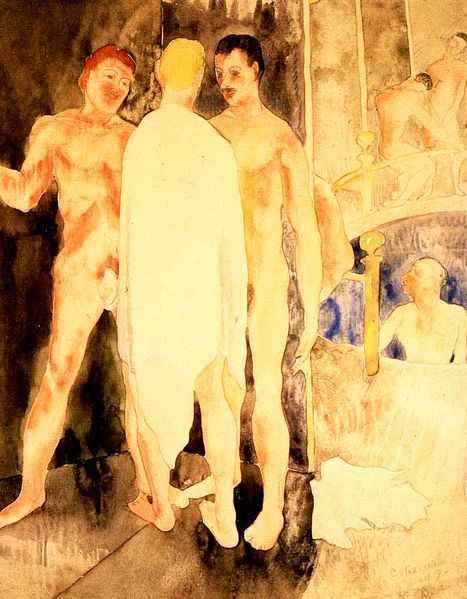The Bathhouse
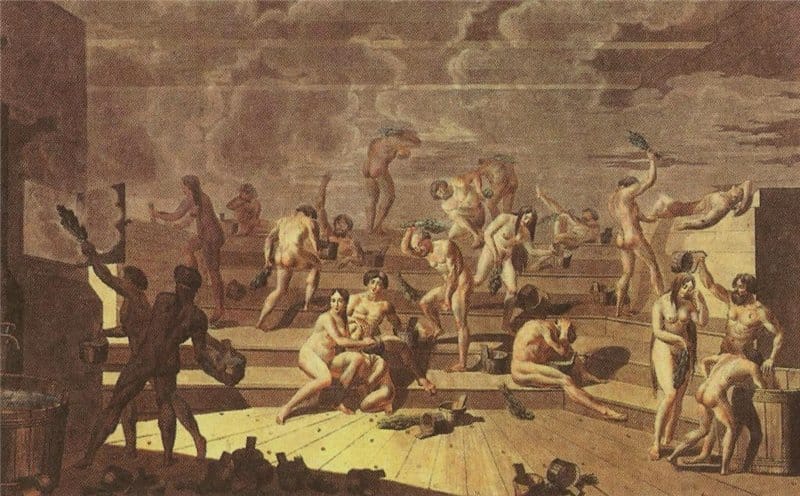
What is it with bathhouses? After the medieval era, they are almost completely absent from Western literature and art, other than in Russian literature and art perhaps, like the image above. Vladimir Mayakovsky's satirical play The Bathhouse (1930) only uses the bathhouse as a metaphor, but there is a bathhouse in the title story of Scenes From the Bathhouse (1961), Mikhail Zoshchenko's gentle satirical take on life in Soviet Russia.
This is despite the fact that past civilizations and other cultures have valued bathhouses as much as tea houses and coffee shops as a great way to meet people and relax and, if one were so inclined, to find a prostitute. Maybe writers don't have good physiques? Even gay culture seems to have lost interest these days?
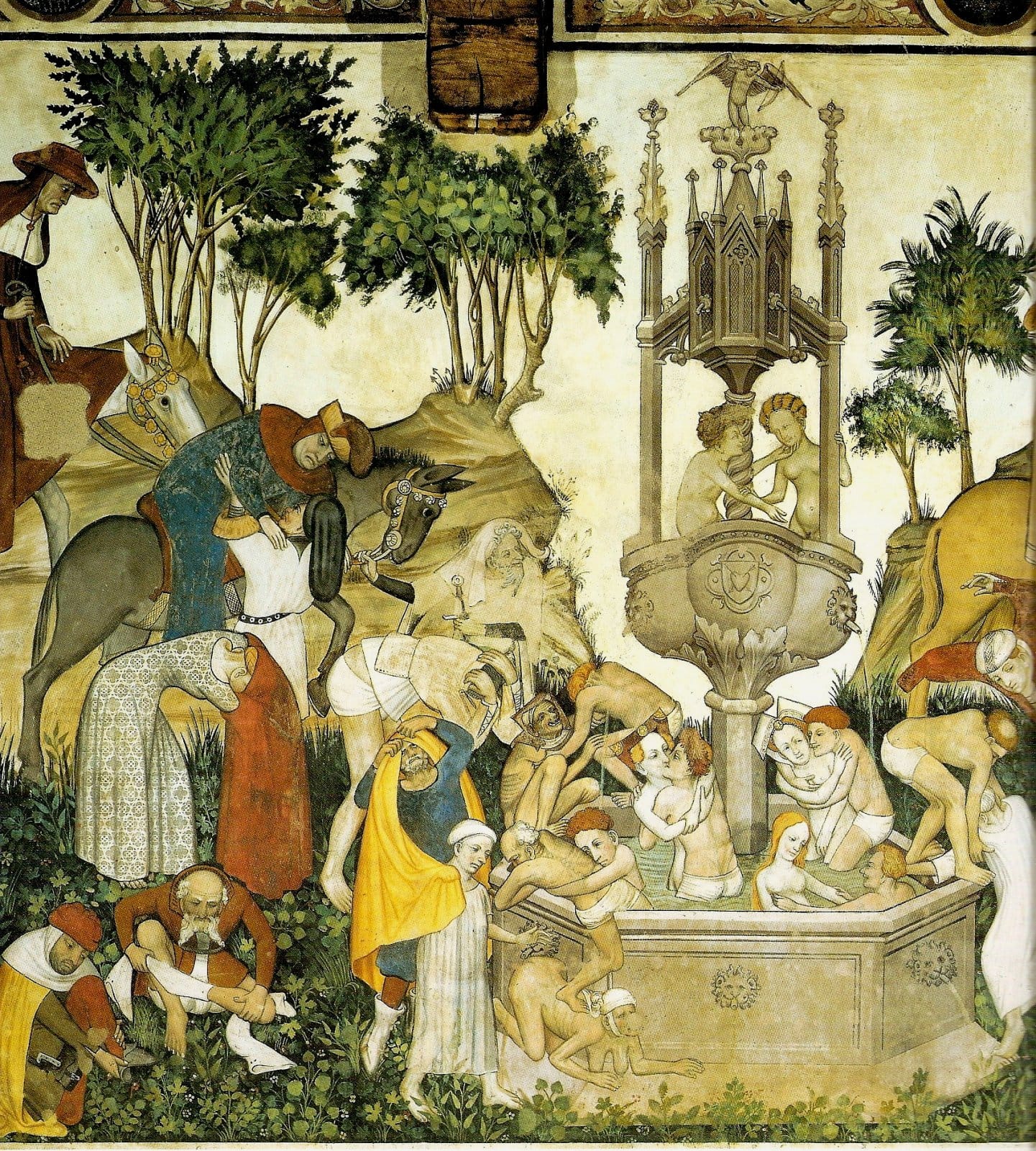
Below is Scene of a bathhouse - Valerius showing emperor Tiberius the decadence of a bathhouse! circa 1470, a miniature painted by the Master of Anthony of Burgundy.
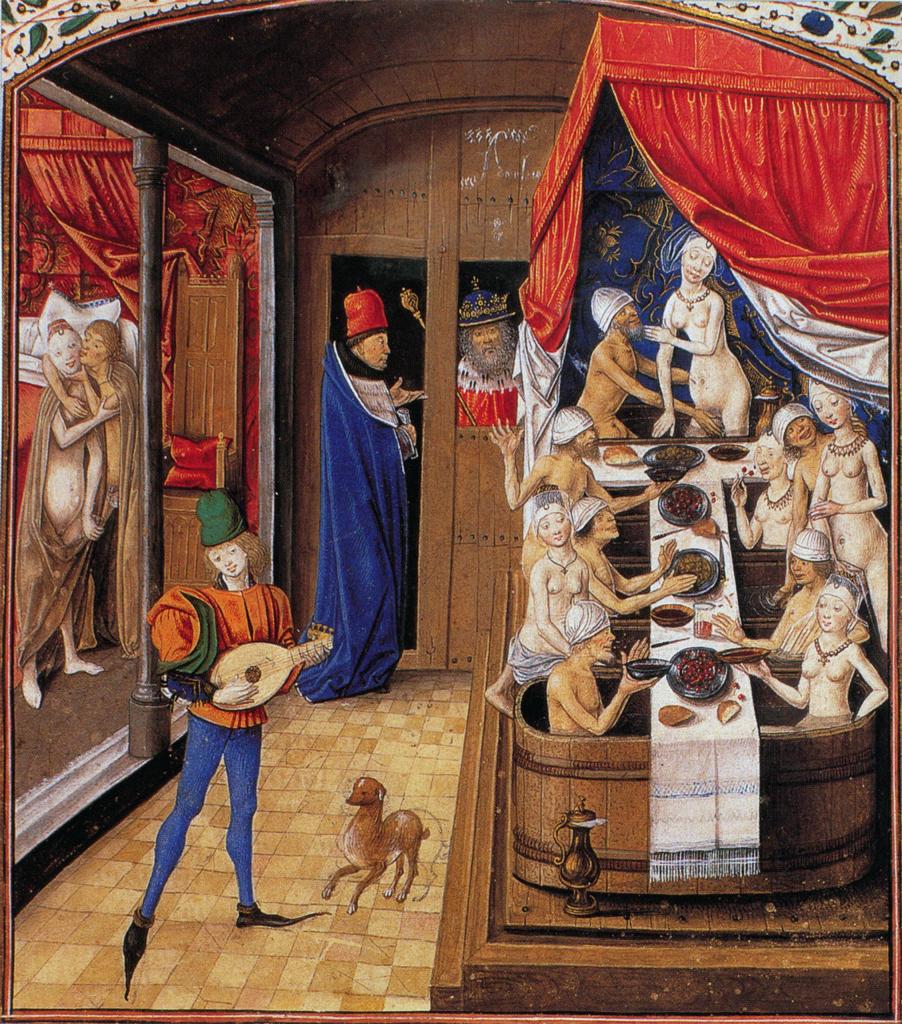
In medieval times, most people bathed regularly in public bathhouses. "These were often built close to bakeries, to share heat produced by the ovens. Public bathhouses offered regular tubs, steam baths, massages, shave and haircut services, as well as medical procedures including simple wound dressing, cupping therapy, and bloodletting... Some went further, providing food and live performance." (link)
Below, this bathhouse is notable for the two women slightly right of center. What are they up to?
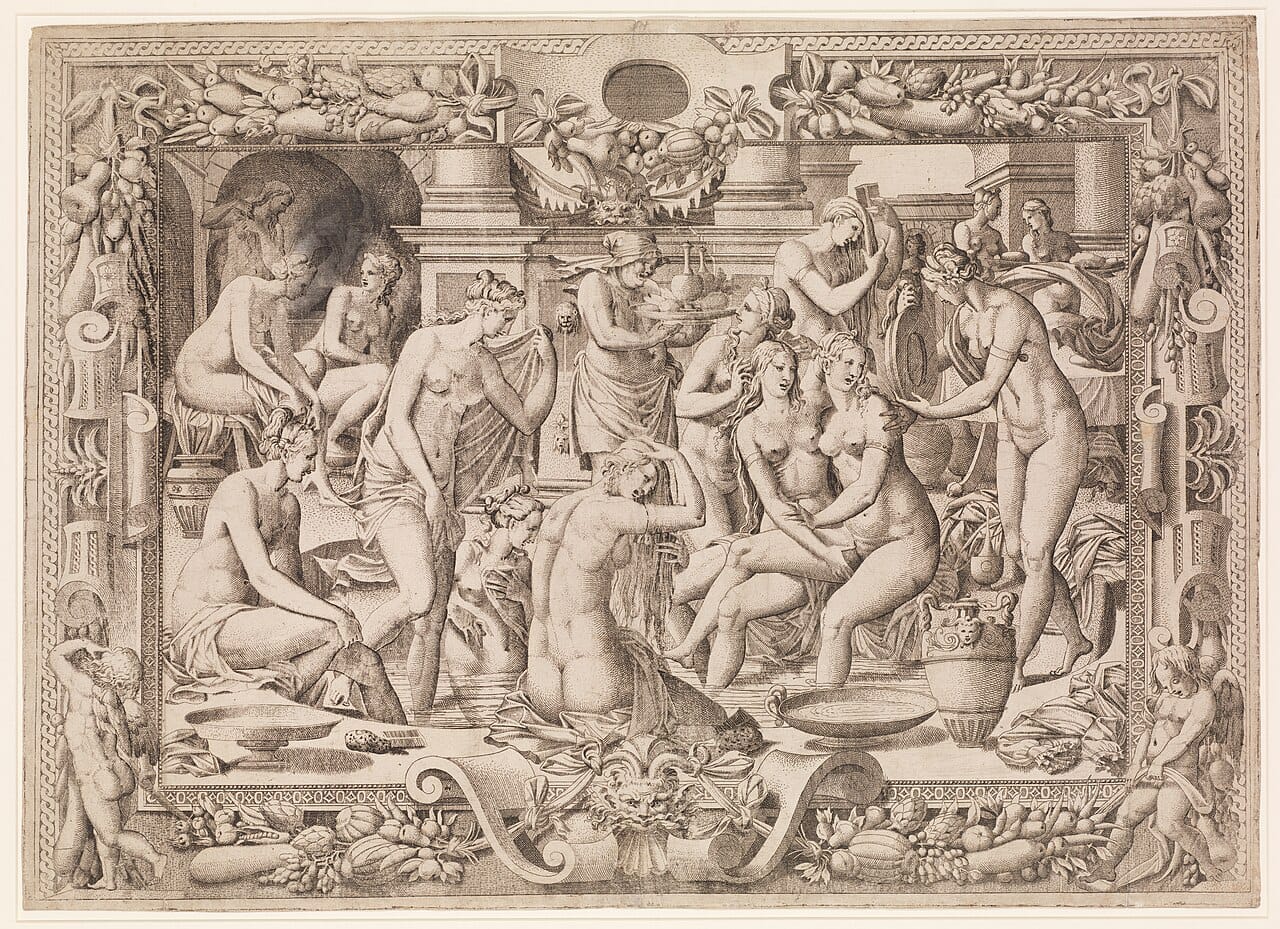
In Western Europe, bathhouses went somewhat out of favor after the Renaissance because of the spread of syphilis and the plague, but they caught on again in the 18th century when the rich came to the spa towns, as much to see and be seen as for "the waters": Bath in England, Karlsbad in Bohemia, Baden Baden in Germany... Visitors at these spas included Jane Austen, Beethoven and Dostoevsky respectively.
The two paintings below are by Lawrence Alma-Tadema, arguably the most successful painter in late Victorian England (although he was Dutch born). First is The Baths at Caracalla (1899). Alma-Tadema's reputation then, as now, rested on his ability to make the English feel that their empire resembled the glory of ancient Rome. Can you imagine this scene happening in London in Victorian times? I can't.
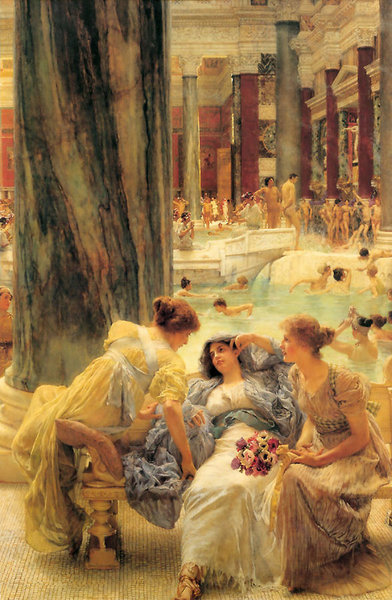
Below is A Favourite Custom (1909), which appears to be hinting coyly at a lesbian encounter, but who's to say? Now that could be London (although it's supposed to be Pompeii). It is in the Tate Gallery.
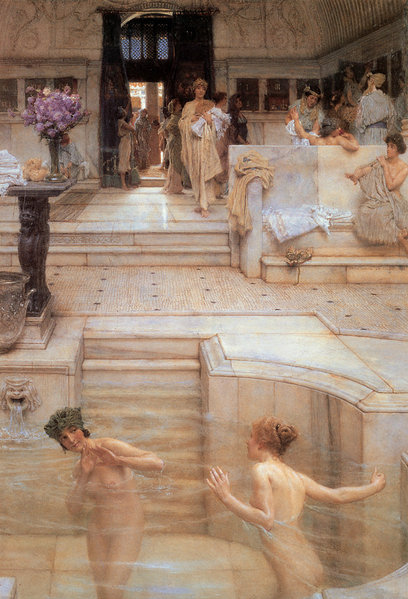
Mayakovsky's The Bathhouse is satirical and surreal and may be compared with Bulgakov's contemporary novel The Master and Margarita: here. The Bathhouse was a flop and Mayakovsky committed suicide months later, albeit for other more personal reasons.
For more bathhouses, purification rituals and baptism in ancient Byzantium: here
Below is Charles Demuth's Turkish Bath with Self Portrait (1918). Primarily a watercolorist, Demuth was from Lancaster, Pennsylvania and this bathhouse was likely the Lafayette Baths in Manhattan. Demuth became well connected among the modernist/artistic communities of New York and Paris. Some of his later work is even more openly gay - not an easy thing at the time. Another similar painter from this era: Swedish painter Eugène Jansson.
